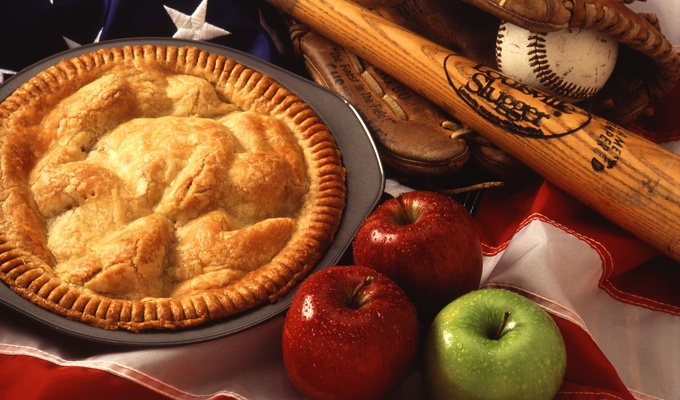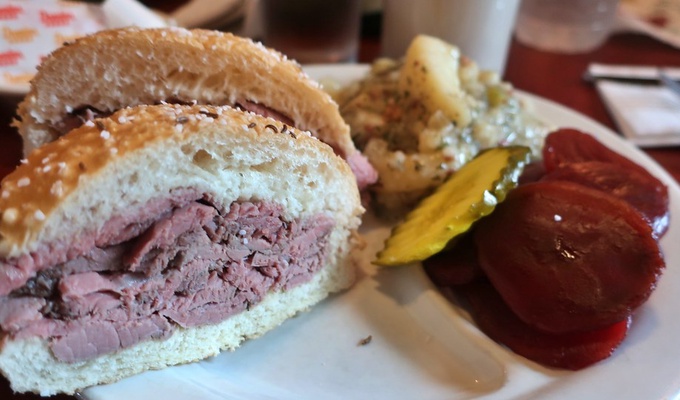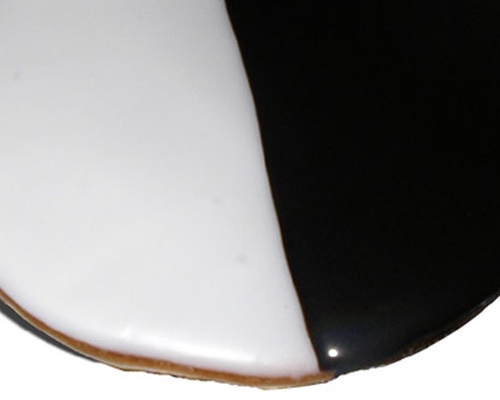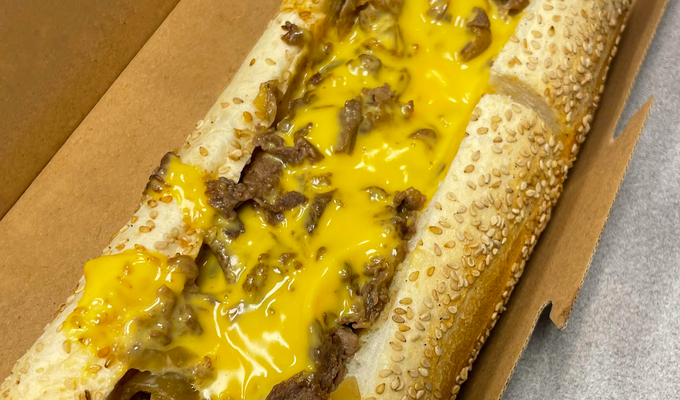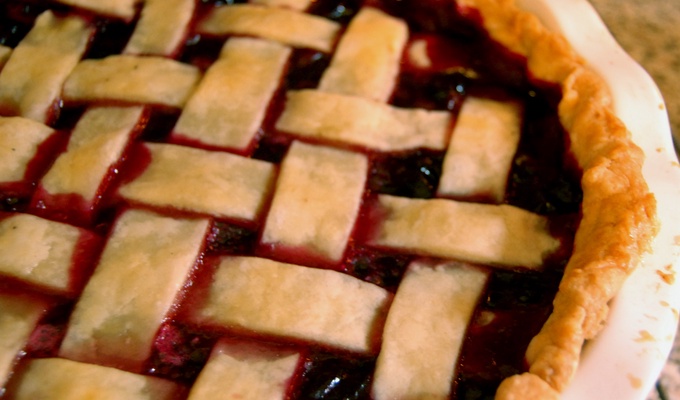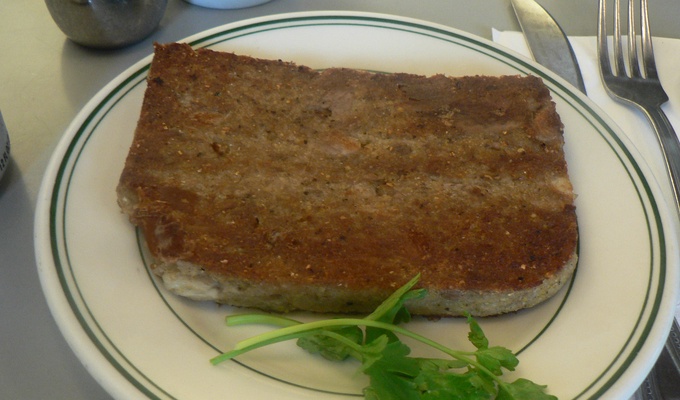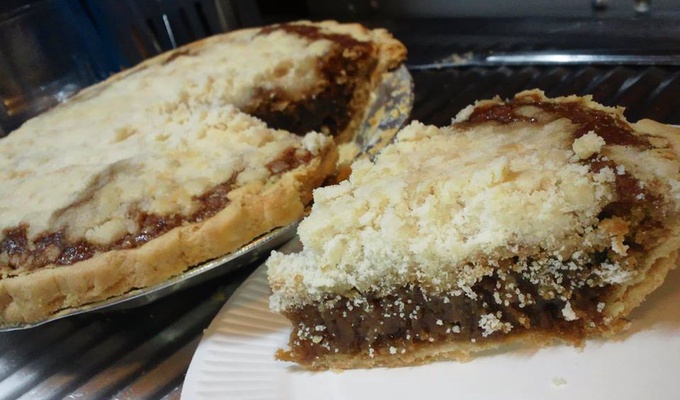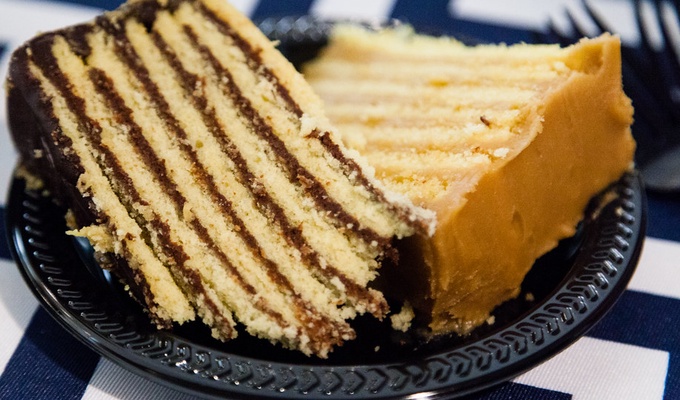The cuisine of the Mid-Atlantic states encompasses the cuisines of the states of New York, New Jersey, Pennsylvania, Delaware, and Maryland, as well as Washington, D.C. The influences on cuisine in this region of the United States are extremely eclectic, as it has been, and continues to be, a gateway for international culture as well as a gateway for new immigrants.
Colonial times
Going back to colonial times, each new group has left their mark on homegrown cuisine and in turn the cities in this region disperse trends to the wider United States. In addition to importing and trading the finest specialty foods from all over the world, cities such as Baltimore and Philadelphia have had the past influence of Italian, German, Irish, British and Jewish cuisines and that continues to this day, and Baltimore has become the crossroads between North and South, a distinction it has held since the end of the Civil War.
Alcoholic beverages
Since the first reference to an alcoholic mixed drink called a cocktail comes from New York State in 1803, it is thus not a surprise that there have been many cocktails invented in New York and the surrounding environs. Long Island iced teas, Manhattans, Rob Roys, Tom Collins, Aviations, and Greyhounds were all invented in New York bars, and the gin martini was popularized in New York in speakeasies during the 1920s.
New York State is the third most productive area in the country for wine grapes, just behind the more famous California and Washington. It has AVA's near the Finger Lakes, the Catskills, and Long Island, and in the Hudson Valley has the second most productive area in the country for growing apples, making it a center for hard cider production, just like New England. Pennsylvania has been growing rye since Germans began to emigrate to the area at the end of the 17th century and required a grain they knew from home. Therefore, overall it is not unusual to find New York grown Gewürztraminer and Riesling, Pennsylvania rye whiskey, or marques of locally produced ciders like Original Sin on the same menu.
Colonial and Early American dishes
Many complex dishes featuring rich ingredients, such as Lobster Newburg, Waldorf salad, vichyssoise, eggs Benedict, and New York strip steak, emerged from a desire to impress the wealthy patrons of now-historic restaurants like Delmonico's, as well as enduring establishments like the Waldorf-Astoria Hotel. This pattern persists today, with some of the most exclusive and expensive restaurants in the country located in this region.
Since their early days, New York, New Jersey, Philadelphia, and Baltimore have served as significant entry points for immigrants arriving in the United States. These cities have long been cultural crossroads, where native-born residents dined alongside newcomers who opened restaurants and small businesses, fostering interaction between various communities. Even in colonial times, the region was a diverse mosaic, drawing settlers from Switzerland, Wales, England, Ulster, Wallonia, Holland, Gelderland, the British Channel Islands, and Sweden. This diversity is reflected in the region's signature dishes, many of which have evolved into quintessentially American foods. For instance, the Dutch settlers of New York brought with them familiar recipes, leaving a lasting influence on local cuisine. Their version of apple pie, topped with streusel, remains popular in many parts of New York, and their preference for waffles has evolved into a staple of the American brunch. Coleslaw, originally a Dutch salad, was later enhanced with mayonnaise in the 18th century. The internationally renowned American doughnut traces its origins to the Dutch olykoek, introduced to New York in the 18th century.
Baltimore's signature crabcakes began as an English croquette but, with the addition of local spices, evolved into a hallmark of Maryland cuisine, alongside the Maryland crab feast. Blue crabbing is a favorite summer pastime in Maryland, New Jersey, Long Island, and Delaware, and blue crabs frequently appear at summer picnics throughout the region. Other regional staples date back to the early years of American history, such as oysters from Cape May, the Chesapeake Bay, and Long Island, and lobster and tuna from the coastal waters of New York and New Jersey. These delicacies are prized at local farmer's markets and are also exported to major cities.
Philadelphia's pepper pot, originally a Caribbean tripe stew, has become a classic Pennsylvania dish, as has bookbinder soup, a form of turtle soup. In winter, New York pushcarts sell roasted chestnuts, a tradition rooted in English Christmas customs. Early Christmas cookies also found their way to New York and Pennsylvania, with Germans introducing gingerbread and sugar cookies in Pennsylvania and the Dutch bringing cinnamon cookies, all of which have become holiday staples. Scrapple, a savory pudding made by Pennsylvania Germans to preserve pork offal, remains a traditional food. Philadelphia’s soft pretzel, introduced by early 18th-century immigrants and later sold from pushcarts, has since evolved into the city's iconic bread product.
19th century immigrants
After the 1820s, new waves of immigrants began arriving, gradually altering the character of the region. Although some Irish from Ulster had settled prior to 1820, they were largely Protestant and brought different food traditions and, often, a different language from the vast numbers of Irish emigrants who began arriving at Castle Garden and Locust Point in the 1840s. Taverns had already existed in the region, but the Irish brought their distinctive pub culture, establishing some of the first saloons and bars that served stout.
The Irish were the first immigrant group to arrive in the region in massive numbers, and their influence on local culture was profound. In addition to the Irish, immigrants from Southern Europe — particularly from Sicily, Campania, Lazio, and Calabria — arrived in the latter half of the 20th century, seeking to escape the widespread poverty in Italy. Many of these Southern European immigrants found employment in manual labor or factory work, but their culinary influence endures. Dishes like spaghetti with meatballs, New York-style pizza, calzones, and baked ziti became part of the American food landscape, and semolina-based pasta is now a staple in American kitchens.
German-speaking immigrants from Austria and Germany also made a lasting impact, particularly with the introduction of the frankfurter and the smaller wiener sausage, which gave rise to the iconic New York-style hot dog. Served with sauerkraut, mustard, and optional pickle relish, the New York hot dog is now a beloved fixture of the city's street food scene. Sold year-round from thousands of pushcarts, hot dogs have become a quintessential part of New York City's culinary fabric, enjoyed in all but the most inclement weather.
20th century
A summertime treat, Italian ice, began its life as a lemon flavored penny lick brought to Philadelphia by Italians; its Hispanic counterpart, piragua, is a common and evolving shaved ice treat brought to New York by Puerto Ricans in the 1930s. Unlike the original dish which included flavors like tamarind, mango, coconut, piragua is evolving to include flavors like grape, a fruit not grown in Puerto Rico.
Pork roll, a meat delicacy of New Jersey, first appeared around the time of the Civil War and today is often served for breakfast with eggs and cheese on a kaiser roll, the bread upon which this is served was brought to the area by Austrians in the second half of the nineteenth century and is a very common roll for sandwiches at lunchtime, usually tipped with poppyseeds. This breakfast meat is generally known as pork roll in southern New Jersey and Philadelphia, and Taylor Ham in northern New Jersey, although Taylor Ham is technically a brand of pork roll.
Other dishes came about during the early 20th century and have much to do with delicatessen fare, set up largely by Jewish immigrants from Eastern Europe who came to America incredibly poor and most often unable to partake in the outdoor food markets that the general population utilized. The influence of European Jewry on modern mid-Atlantic cooking remains extremely strong and reinforced by their many descendants in the region. American-style pickles were brought by Polish Jews, now a common addition to hamburgers and sandwiches, and Hungarian Jews brought a recipe for almond horns that now is a common regional cookie, diverting from the original recipe in dipping the ends in dark chocolate. New York-style cheesecake has copious amounts of cream and eggs because animal rennet is not kosher and thus could not be sold to a large number of the deli's clientele. New York inherited its bagels and bialys from Jews, as well as Challah bread, the bread today most favored for making french toast in New York, New Jersey, and eastern Pennsylvania. Pastrami first entered the country via Romanian Jews, and is a feature of many sandwiches, often eaten on marble rye, a bread that was born in the mid Atlantic. Whitefish salad, lox, and matzoh ball soup are now standard fare made to order at local diners and delicatessens, but started their life as foods that made up a strict dietary code.
Like other groups before them, many of their dishes passed into the mainstream enough so that they became part of diner fare by the end of the 20th century, a type of restaurant that is now more numerous in this region than any other. In the past this sort of establishment was the haven of the short order cook grilling or frying simple foods for the working man. Today, typical service would include regional staples like beef on weck, Manhattan clam chowder, the club sandwich, Buffalo wings, Philadelphia cheesesteak, the black and white cookie, shoofly pie, snapper soup, Smith Island cake, grape pie, milkshakes, and the egg cream.
